When we did the original HP EliteDesk 800 G6 Mini piece, we were focused on current generation 35W TDP “classic” 1L Project TinyMiniMicro PCs. As such, we were focused on getting a baseline across the industry. The other vector we wanted to look at is the performance of the higher-TDP parts in this generation, so we also purchased a HP EliteDesk 800 G6 Mini 65W unit running the non-T Intel Core i5-10500. In this review, we are going to take a look at the platform and then compare it to the 35W version. Before we get to the competition, let us get to the unit.
Project TinyMiniMicro Background
In Project TinyMiniMicro we are purchasing a large number of these devices from different sources. While a standard STH review is of a new product, these TMM nodes occasionally have specs that differ from what one would expect. In all of these pieces, we are going to talk about what makes the nodes unique. We are now well over 35 different nodes to increase diversity. We are testing these on a more circular economy/ extended lifecycle basis to see how they can be deployed after their initial use as corporate desktops. As always, we have a video version of this article.
We recommend opening this video in a YouTube tab/ app for a better viewing experience.
For our $905 (before tax), we received a node with an Intel Core i5-10500, 16GB of memory, WiFi 6, and a 256GB NVMe SSD. We even got an embedded Windows 10 Pro license which would have cost us around $140 alone. We also had a 1-year warranty on this unit. For some perspective, this had more memory and a faster processor but was around $180 more.
This is part of our new series where we are taking a look at some of the newest 10th generation ~1L PCs on the market. With our TinyMiniMicro series, we understand that there is always going to be tension. Older units are less expensive, but unlike buying an old hammer, we get significantly more capabilities and features in new versions. So we wanted to update Project TinyMiniMicro to see if newer units justify the price premium over older ones.
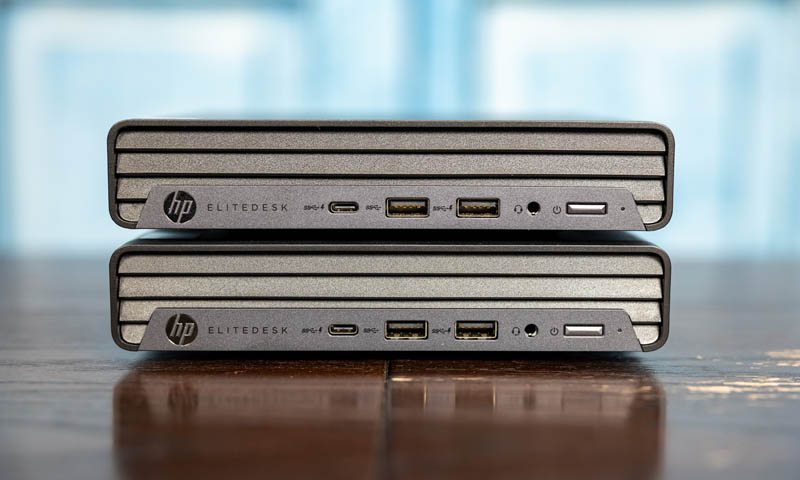
In this generation, we already reviewed the previously mentioned, HP EliteDesk 800 G6 Mini 35W, Dell OptiPlex 7080 as well as the Lenovo ThinkCentre M75q Gen2 Tiny, and ThinkCentre M90q Tiny. In terms of market segment, the HP EliteDesk 800 G6 Micro is most similar to the M90q Tiny and the Dell OptiPlex 7080 Micro. Perhaps this is more of the premium 1L desktop segment although some of the changes are relatively small.
We are going to go into a quick hardware overview, then into the key specs. We are then going to talk a bit about performance and power consumption before getting to our lessons learned from these units and our final words.
HP EliteDesk 800 G6 Mini 65W Hardware Overview
The HP EliteDesk 800 G6 Mini 65W is around 1L in size and uses an updated front design compared to the HP EliteDesk 800 G4 Mini we reviewed previously. It is virtually identical to the 35W version. Indeed, a lot is shared with the lower power version and that makes sense.
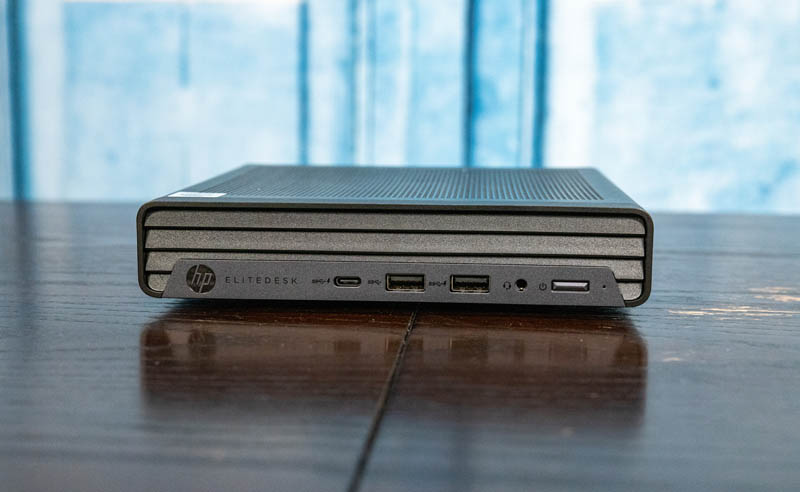
Aside from the power button, we get a headset port on the front of the system. HP has a class-leading front USB port selection. We get a USB 3.2 Gen2 Type-A port and a USB 3.2 Gen2 Type-C port on the front. The right port is a Gen1 port which is only a 5Gbps port. Something we wish is that HP would label these ports. Other vendors such as Dell denote 10Gbps ports. For users who do not get into details, it is hard to decipher which ports are higher and lower speed. Since there is a recognized 10Gbps USB sign, and the cost is simply for the ink, it is difficult to forgive this omission.
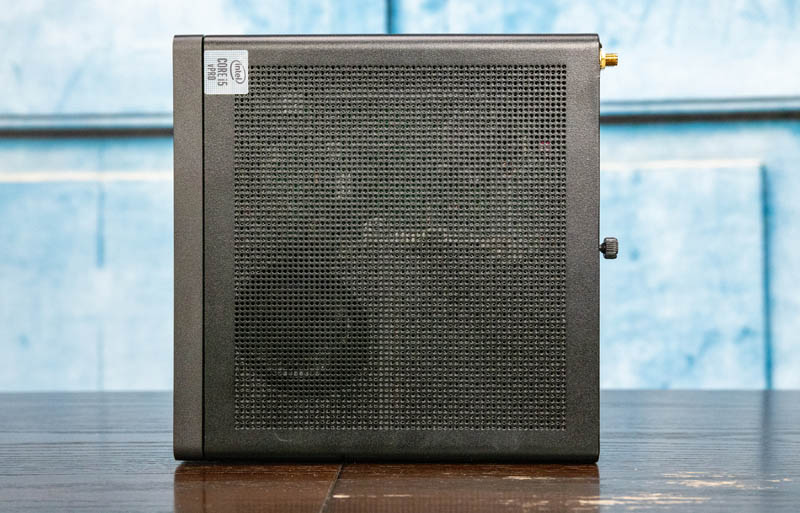
Something that is quite different, and important between the 65W and the 35W units is the top. The top of the system on the 65W unit is perforated to allow more airflow. While airflow is good, the reason the system needs such a top is that CPU cooling in this small space is a challenge. Having used many of these systems, we will say that the goal of having stackable Project TinyMiniMicro nodes in a cluster can be hampered by this airflow design. When a unit is placed atop the perforated 65W TDP top, it restricts airflow. That means fans need to work harder. Also, if you are sticking these units next to your desk, this mesh top is not the most spill-resistant design.
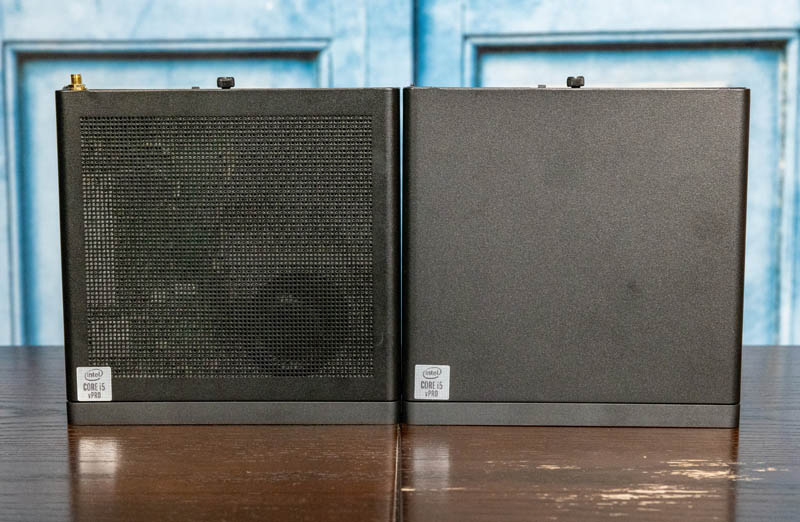
On the rear of the unit, we get a fairly standard port configuration. We get two DisplayPort 1.4 outputs standard. Some competitive systems have HDMI and DisplayPort which we probably like better for connecting without an adapter to televisions. We get two USB 3.2 Gen2 and two Gen1 Type-A ports for four total. Again, HP does not note which are 10Gbps and 5Gbps ports which is a glaring omission. There is a RJ45 port that is powered by an Intel i219-LM which allows this system to work with Intel vPro that our system came equipped with.
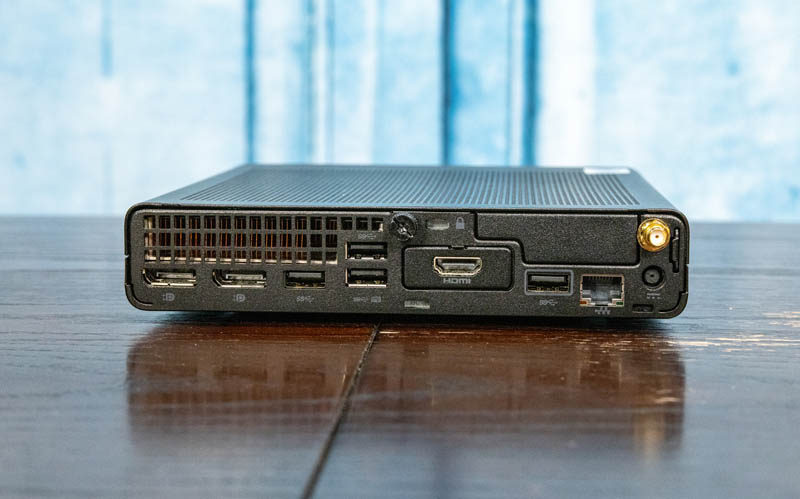
Perhaps the big feature is the two Flex Ports. These systems have additional ports which can be configured for customers with unique features. Usually those are serial/ VGA/ HDMI/ DisplayPort/ and USB Type-C ports. In the Flex Port 2 (blank in our system) one can get a NVIDIA GeForce GTX 1660 Ti configured, serial, or USB ports. This is what the unit would look like with a GPU in that Flex Port 2:
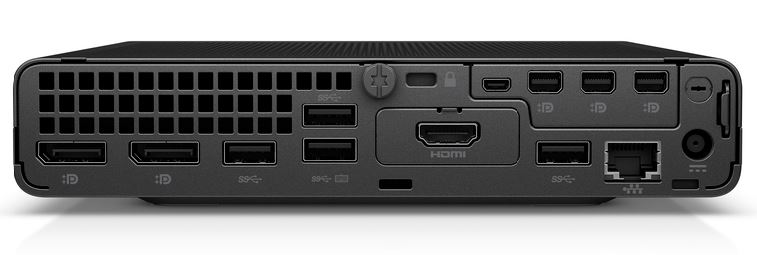
The Flex Port 1, where ours has a HDMI port we originally assumed was this classic set of options. When we looked up the specs, the options were more expansive including a Fiber NIC (100M/ 1G) and even an Intel i225-lm 2.5GbE NIC.
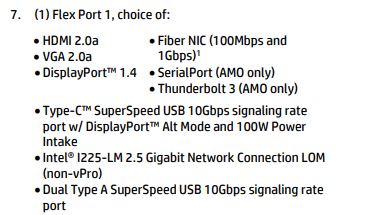
Unfortunately, we were unable to get the 2.5GbE NIC, but this is something we wish we had as networking is often the weak point in these systems.
Inside we have a fairly typical HP Mini layout. The CPU and memory are on top with the storage on the bottom. Our unit did not come with the 2.5″ hard drive/ SSD tray nor the SATA data/ power cable.
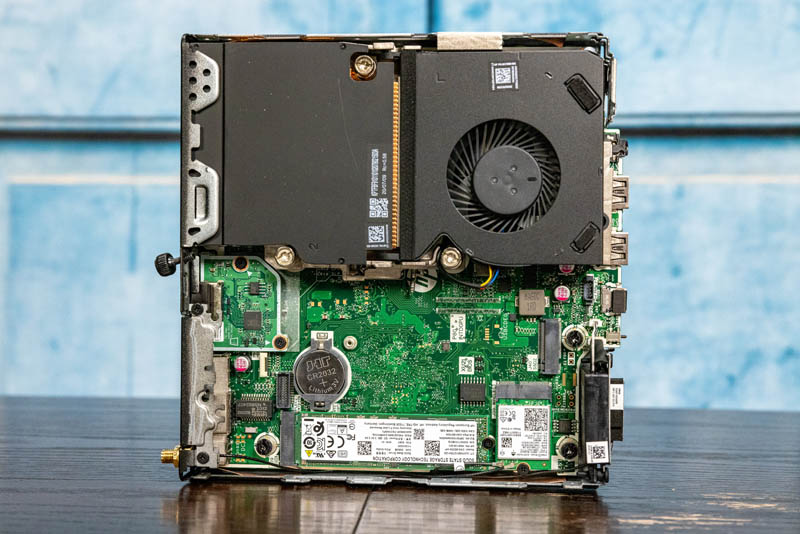
In this system, we had the WiFi option, specifically with the Intel AX201 WiFi 6 and Bluetooth 5.1 connectivity. WiFi is optional, and HP has options for other NICs (or no NIC at all.) Our advice is to get the Intel AX201 solution installed from the factory. It is much easier than adding this later and it also allows for vPro access. One other item is that the WiFi 6 antenna is internal rather than being on an external protrusion as it was in previous generations. HP does a great job of this compared to Dell and Lenovo.
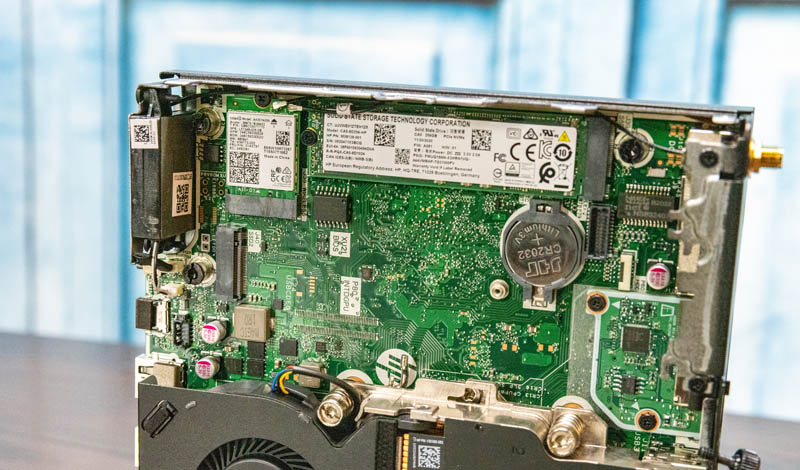
On either side of that WiFi module, there are two M.2 SSD slots. Our unit had a 256GB Solid State Storage Technology Corporation (was LiteOn now Kioxia) NVMe SSD installed. Still, the ability to add additional storage to this chassis is great.
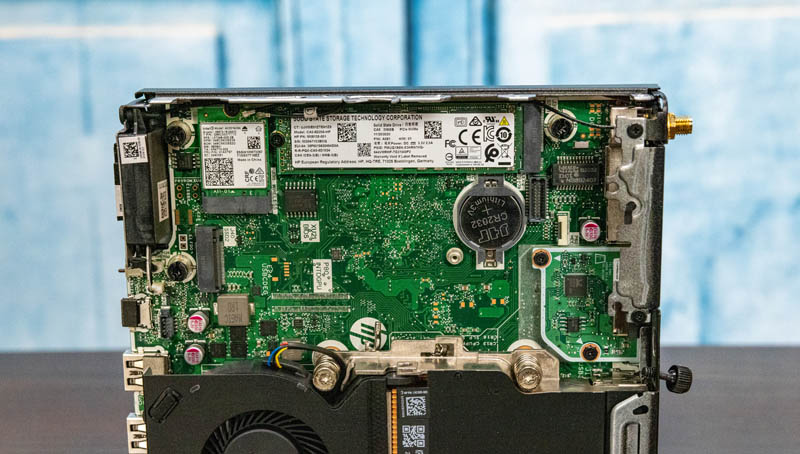
HP’s CPU and memory cooler design place a fan over the memory that can be pulled out quickly. This is an evolution of the design we have seen for generations. Memory can be up to DDR4-2933 in this generation. The Core i5-10500 we have supports DDR4-2666 only because Intel de-rates the mid-range SKUs like this one. We purchased this system with only 16GB of memory but we would suggest getting more memory and using two SODIMMs for dual-channel operation in this system and tested the system with dual 32GB SODIMMs for 64GB total.
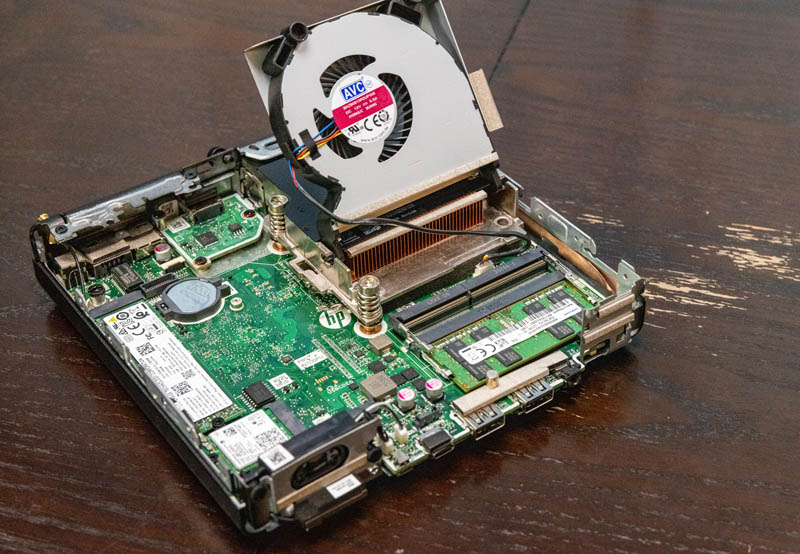
Something that is interesting here is that the heatsink is a copper heatsink in the 65W version. This is likely due to the additional thermal requirements placed on the system with a hotter CPU. The heatsink is covered, but it is fairly easy to see looking at the two units side-by side.
Paired with the Intel Q470 chipset we have an Intel Core i5-10500 and Intel vPro support. This is a 6 core/ 12 thread processor which effectively adds Hyper-Threading to this segment. This is a 65W TDP CPU unit, but HP offers versions with 35W TDP Core i5-10500T CPUs that have more robust cooling.
Next, we are going to take a look at the key specs, and performance before getting to our power consumption and final words.

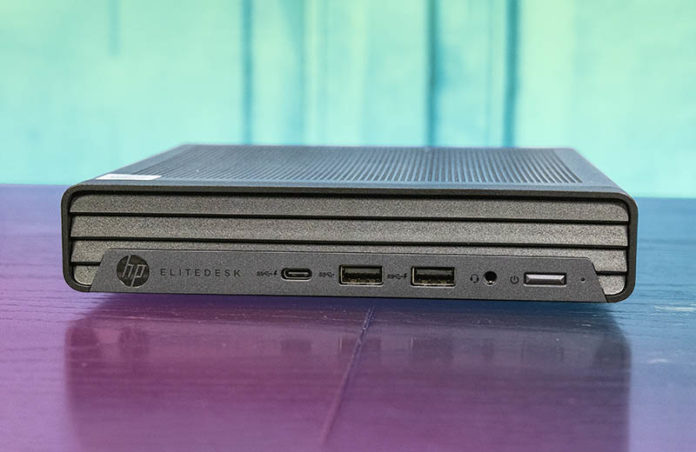



Is there a compact way of powering multiple TMM PCs? The power bricks and cabling always turn into a mess. Do you know of a decent single supply for multiple units? I’ve found some solutions via search (particularly for bitcoin farms) but they’re all rather janky!
Y0s there is another challenge doing this. The TMM units usually detect a genuine PSU and its output so just a simple DC PSU that is split will not work.
I have not found a great solution yet.
in my experience it’s a simple voltage check, the centre pin needs to be the correct voltage. HP user this to determine its capability with regards to wattage etc.
I personally have hacked two cables onto one 135W HP power supply to supply two HP 35W TDP G3’s. Been working fine.
Patrick, Glad to hear that y’all made it to Austin, TX and the Blue Door Screen did, too.
I’d love it if we could get TMM style machines that snapped onto DIN rails. They would be the ultimate home servers.
Hi.
Compared to a Mac mini late 2019 which will shut off fans most of the time while doing light tasks like office documents or web browsing. How much do the fans on the HPs spin up? Do they run all the time or can they completely shut off like in the mac mini?
Hello. I have a G5 model with an i7 and I like it alot for my home automation stuff.
I do wonder about the heat inside and notice that the 65 watt unit you show has a ventilated cover while the 35 watt unit does not. My unit does not have this cover. So:
(a) should I consider getting a different cover?
(b) are the covers interchangable between generations of the 800 mini?
Thanks
I’m researching information on those and they say in the documentation that you can’t use the Nvidia Flex IO with 65w cpu
AvailableGraphics
Integrated: Intel®UHDGraphics 610; Intel®UHDGraphics 630
Discrete: NVIDIA®GeForce®GTX 1660 Ti(6 GB GDDR6 dedicated)*
*Only Available on 35W processor.
https://h20195.www2.hp.com/v2/GetPDF.aspx/c08338984.pdf